First Drive: 2014 Nissan Rogue
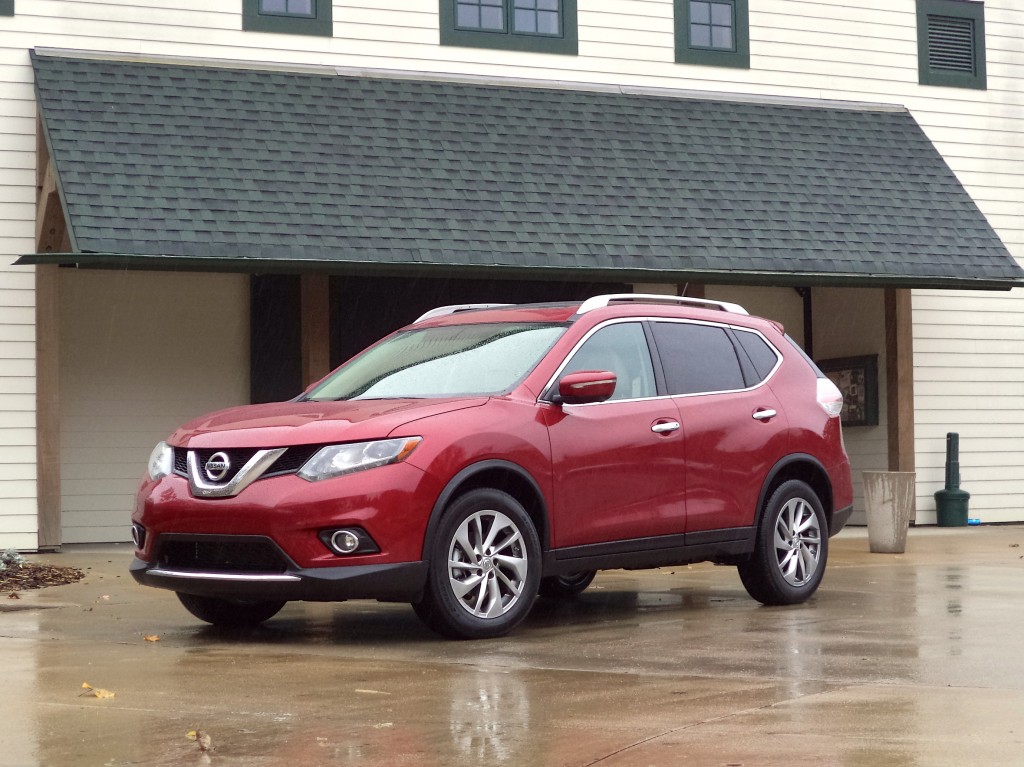 Story and photos by John LeBlanc
NASHVILLE, Tennessee – Like the compact car market in Canada, the compact crossover segment is ultra competitive. And while Nissan’s first-generation Rogue still lags behind the likes of the Ford Escape, Honda CR-V and Toyota RAVE 4 on the sales charts, the small crossover is one of the Japanese brand’s bestsellers.
However, to better compete with the segment leaders, the new 2014 second-generation Rogue comes loaded with more upscale exterior styling, a premium interior, new start-of-the-art driving and safety aids — and for the first time ever —optional third-row seating.
The 2014 Rogue is now a global vehicle. Just like the 2008 original, it slips between the sub-compact, five-passenger Juke and the mid-size, six- or seven-passenger Pathfinder in Nissan’s crossover garage. Essentially the North American version of the foreign-market Nissan X-Trail, the Rogue uses the same all-new Nissan-Renault platform.
Story and photos by John LeBlanc
NASHVILLE, Tennessee – Like the compact car market in Canada, the compact crossover segment is ultra competitive. And while Nissan’s first-generation Rogue still lags behind the likes of the Ford Escape, Honda CR-V and Toyota RAVE 4 on the sales charts, the small crossover is one of the Japanese brand’s bestsellers.
However, to better compete with the segment leaders, the new 2014 second-generation Rogue comes loaded with more upscale exterior styling, a premium interior, new start-of-the-art driving and safety aids — and for the first time ever —optional third-row seating.
The 2014 Rogue is now a global vehicle. Just like the 2008 original, it slips between the sub-compact, five-passenger Juke and the mid-size, six- or seven-passenger Pathfinder in Nissan’s crossover garage. Essentially the North American version of the foreign-market Nissan X-Trail, the Rogue uses the same all-new Nissan-Renault platform.
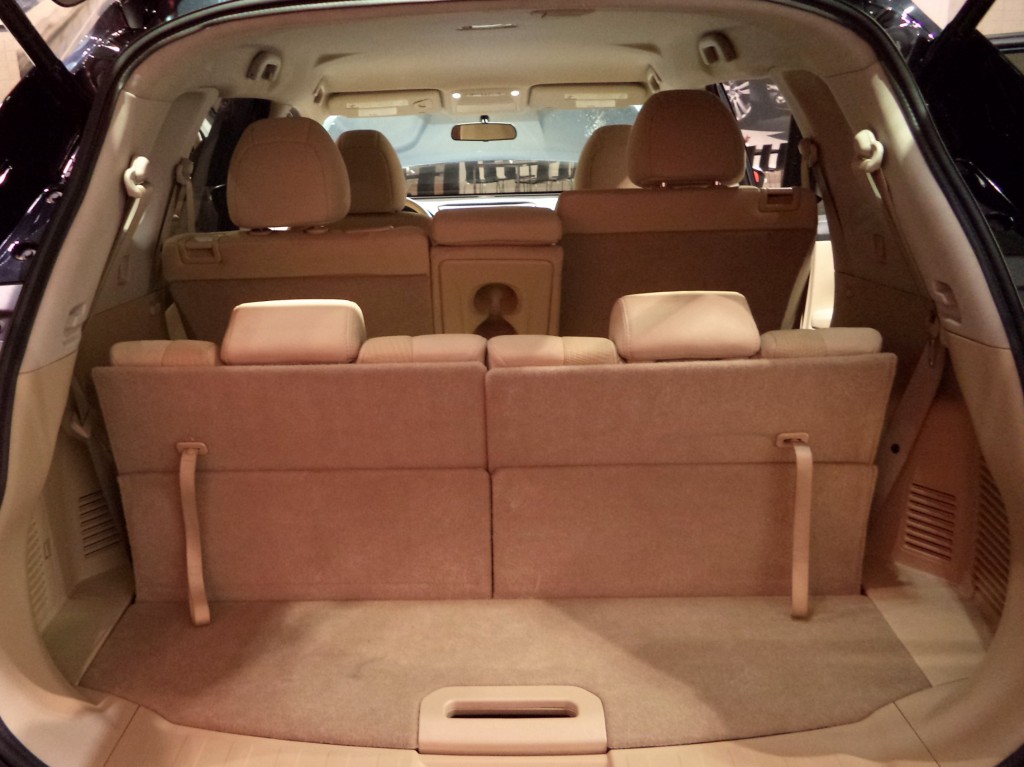 Despite having a similar footprint as the outgoing Rogue that’s been on-sale since 2008, the 2014 model’s longer wheelbase makes for a much roomier cabin — roomy enough for Nissan to offer a pair of jump seats in the back, making the Rogue a seven-seater, and a feature in the segment only shared with the Dodge Journey and Mitsubishi Outlander.
Used as a five-seater, the new Rogue excels. Its reclining second-row seating offers generous legroom, and the middle portion of the 40/20/40-split bench allows for longer items like hockey sticks and skis. Like in its rivals, though, the Rogue’s new third-row seats are strictly for occasional use only. At least extra-wide rear door openings and Nissan’s so-called EZ Flex Seating System (first seen in last year’s new Pathfinder) make it relatively easier to get to the furthest row.
Equally impressive as the Nissan’s roomier cabin is its functional interior design with excellent fit-and-finish. Compared to existing Nissan models, the extensive use of soft-touch plastics and aluminum-like trim give the Rogue a premium feeling throughout — much nicer than the rival Honda CR-V and Toyota RAV4 Nissan had onhand. The Rogue’s centre control stack is also more intuitive to use than the frustrating Ford Escape’s controls, with the Nissan’s audio and climate controls cleanly separated and organised. Details like optional Quick Comfort heated front seats (that are designed to immediately begin warming your thighs and hips first) only add to the Rogue’s upscale vibe.
Despite having a similar footprint as the outgoing Rogue that’s been on-sale since 2008, the 2014 model’s longer wheelbase makes for a much roomier cabin — roomy enough for Nissan to offer a pair of jump seats in the back, making the Rogue a seven-seater, and a feature in the segment only shared with the Dodge Journey and Mitsubishi Outlander.
Used as a five-seater, the new Rogue excels. Its reclining second-row seating offers generous legroom, and the middle portion of the 40/20/40-split bench allows for longer items like hockey sticks and skis. Like in its rivals, though, the Rogue’s new third-row seats are strictly for occasional use only. At least extra-wide rear door openings and Nissan’s so-called EZ Flex Seating System (first seen in last year’s new Pathfinder) make it relatively easier to get to the furthest row.
Equally impressive as the Nissan’s roomier cabin is its functional interior design with excellent fit-and-finish. Compared to existing Nissan models, the extensive use of soft-touch plastics and aluminum-like trim give the Rogue a premium feeling throughout — much nicer than the rival Honda CR-V and Toyota RAV4 Nissan had onhand. The Rogue’s centre control stack is also more intuitive to use than the frustrating Ford Escape’s controls, with the Nissan’s audio and climate controls cleanly separated and organised. Details like optional Quick Comfort heated front seats (that are designed to immediately begin warming your thighs and hips first) only add to the Rogue’s upscale vibe.
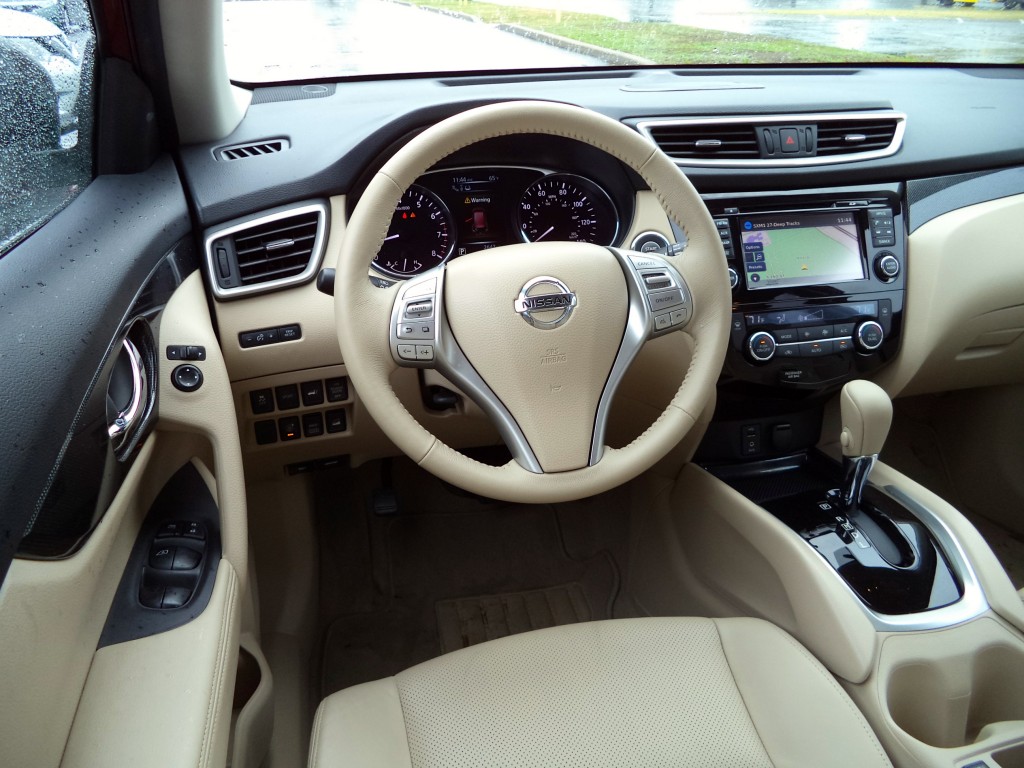 The 2014 Rogue comes in the familiar S, SV and top-line SL models. And Nissan Canada is saying that moving production from Japan to the U.S. means the new Rogue’s base price is “very compelling”. The $25,128 (all prices include freight and pre-delivery inspection fees) Rogue S and $28,378 Rogue SV models can be had as front-drivers, with all-wheel drive optional. The $32,128 SL comes only with traction at all four wheels.
With standard features like a rear back-up camera, Bluetooth, hands-free text messaging, aux jack, and a USB connection port for iPods and other compatible devices, even the base Rogue S is competitively equipped. Options like the third-row seating, navigation, Nissan’s Around View Monitor, power liftgate, Blind Stop and Lane Departure Warning systems, and Moving Object Detection only add to its premium vehicle aspirations.
Even with its mainstream pricing, the 2014 Rogue drives like a premium vehicle. Its ride is complaint without being too sharp. Its electronic steering delivers just enough feedback, without being too light. And road and engine noise are noticeably absent. Compact crossover buyers who like to drive will be better served in an Escape, Kia Sportage, Mazda CX-5 or Volkswagen Tiguan. But if your priorities lie more towards a comfortable and quiet ride, the 2014 Rogue is a massive step up from its less refined predecessor.
The 2014 Rogue comes in the familiar S, SV and top-line SL models. And Nissan Canada is saying that moving production from Japan to the U.S. means the new Rogue’s base price is “very compelling”. The $25,128 (all prices include freight and pre-delivery inspection fees) Rogue S and $28,378 Rogue SV models can be had as front-drivers, with all-wheel drive optional. The $32,128 SL comes only with traction at all four wheels.
With standard features like a rear back-up camera, Bluetooth, hands-free text messaging, aux jack, and a USB connection port for iPods and other compatible devices, even the base Rogue S is competitively equipped. Options like the third-row seating, navigation, Nissan’s Around View Monitor, power liftgate, Blind Stop and Lane Departure Warning systems, and Moving Object Detection only add to its premium vehicle aspirations.
Even with its mainstream pricing, the 2014 Rogue drives like a premium vehicle. Its ride is complaint without being too sharp. Its electronic steering delivers just enough feedback, without being too light. And road and engine noise are noticeably absent. Compact crossover buyers who like to drive will be better served in an Escape, Kia Sportage, Mazda CX-5 or Volkswagen Tiguan. But if your priorities lie more towards a comfortable and quiet ride, the 2014 Rogue is a massive step up from its less refined predecessor.
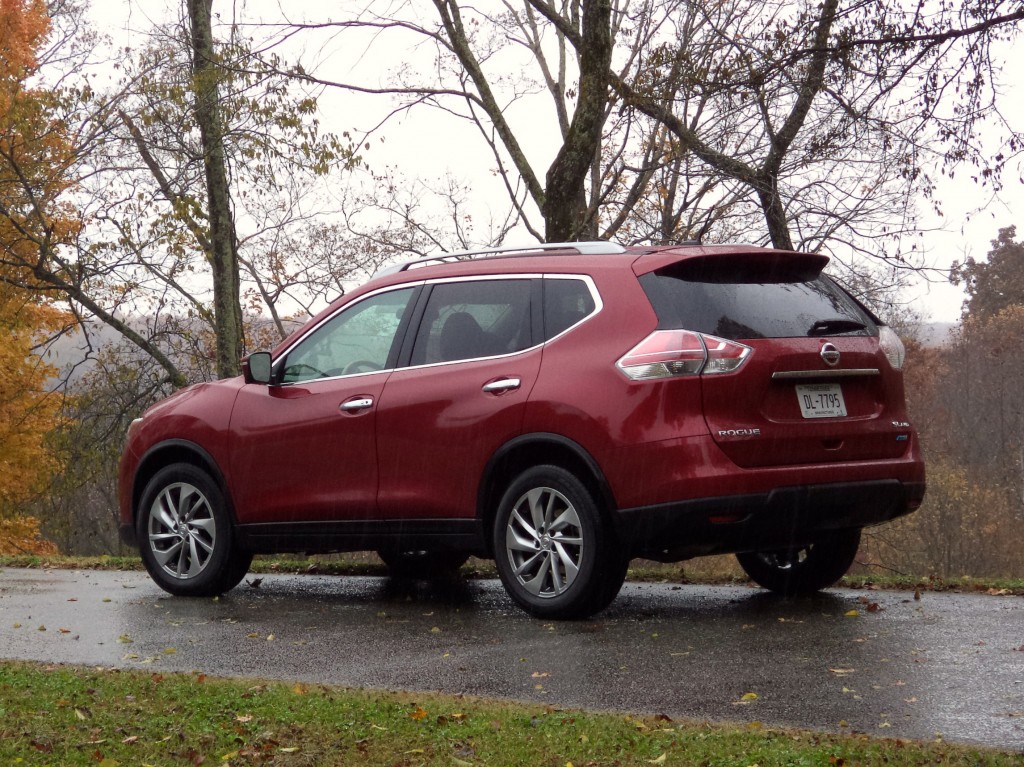 For many buyers, “premium” these days translates into “technology”. As such, the 2014 Rogue gains a trio of new driving aids. The first is Active Trace Control that works with the Nissan’s stability control to measure out engine torque and use the brakes to increase stability in corners. Second is Active Engine Braking, that engages the CVT to deliver more negative engine torque to help slow the vehicle. And finally, Active Ride Control keeps the Rogue under control through large road dips and undulations via a combination of automatic braking and throttle management.
With all of its newfound room, premium interior and state-of the-art goodies, the least innovative part of the 2014 Rogue lies underneath its front hood. An essentially carryover 170 horsepower and 175 pound-feet of torque 2.5-litre four-cylinder gas engine, mated to a continually variable automatic transmission is the lone Rogue powertrain.
For many buyers, “premium” these days translates into “technology”. As such, the 2014 Rogue gains a trio of new driving aids. The first is Active Trace Control that works with the Nissan’s stability control to measure out engine torque and use the brakes to increase stability in corners. Second is Active Engine Braking, that engages the CVT to deliver more negative engine torque to help slow the vehicle. And finally, Active Ride Control keeps the Rogue under control through large road dips and undulations via a combination of automatic braking and throttle management.
With all of its newfound room, premium interior and state-of the-art goodies, the least innovative part of the 2014 Rogue lies underneath its front hood. An essentially carryover 170 horsepower and 175 pound-feet of torque 2.5-litre four-cylinder gas engine, mated to a continually variable automatic transmission is the lone Rogue powertrain.
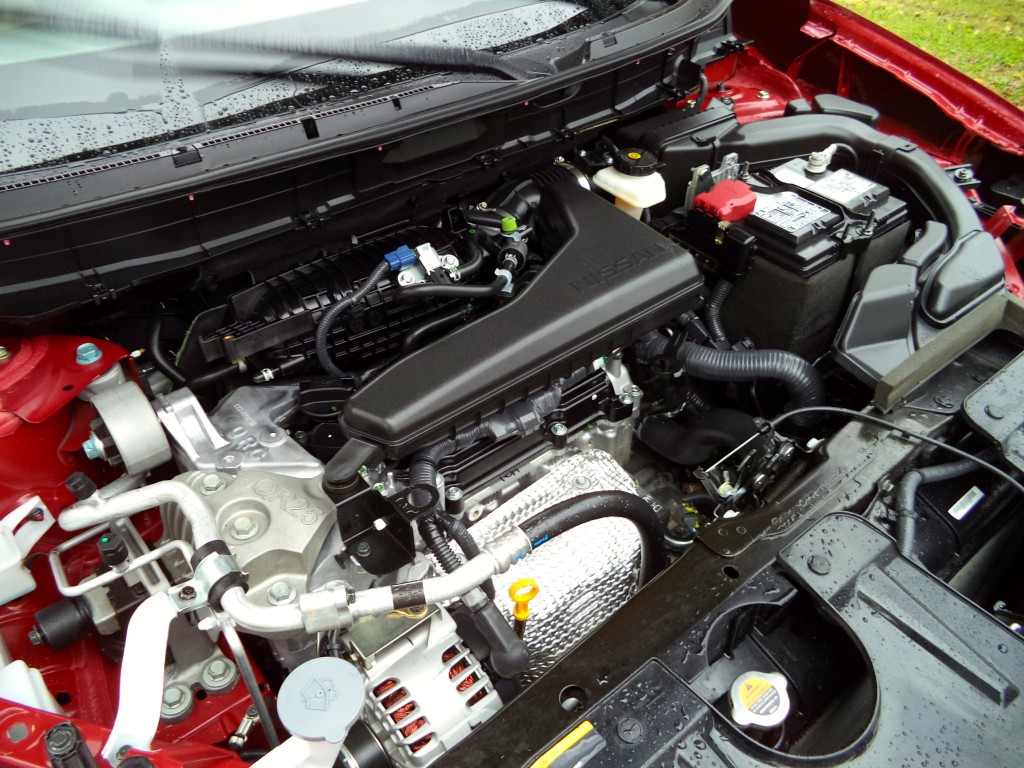 With only two automotive writers onboard, the mill is merely adequate. Mainly through tweaking the CVT and better aerodynamics, at least Nissan has managed to make the 2014 more fuel-efficient — admittedly, more of a priority than tire-burning performance within this segment. The front-wheel-drive model is rated at 7.9 L/100 kms in the city, 6.0 on the highway, with all-wheel-drive versions sipping only 8.2 and 6.2 respectively. Those figures are not only better than the 2013 model, but also the Escape, CR-V and RAV4.
In a crowded class, with its extra room, improved fuel economy, longer list of standard and available features, and upscale interior and driving demeanour, the 2014 Nissan Rogue goes from an afterthought to one of the leaders.
With only two automotive writers onboard, the mill is merely adequate. Mainly through tweaking the CVT and better aerodynamics, at least Nissan has managed to make the 2014 more fuel-efficient — admittedly, more of a priority than tire-burning performance within this segment. The front-wheel-drive model is rated at 7.9 L/100 kms in the city, 6.0 on the highway, with all-wheel-drive versions sipping only 8.2 and 6.2 respectively. Those figures are not only better than the 2013 model, but also the Escape, CR-V and RAV4.
In a crowded class, with its extra room, improved fuel economy, longer list of standard and available features, and upscale interior and driving demeanour, the 2014 Nissan Rogue goes from an afterthought to one of the leaders.
01.07.14 | 2014, Car Buying Advice, first drives, Nissan | Comments Off on First Drive: 2014 Nissan Rogue




